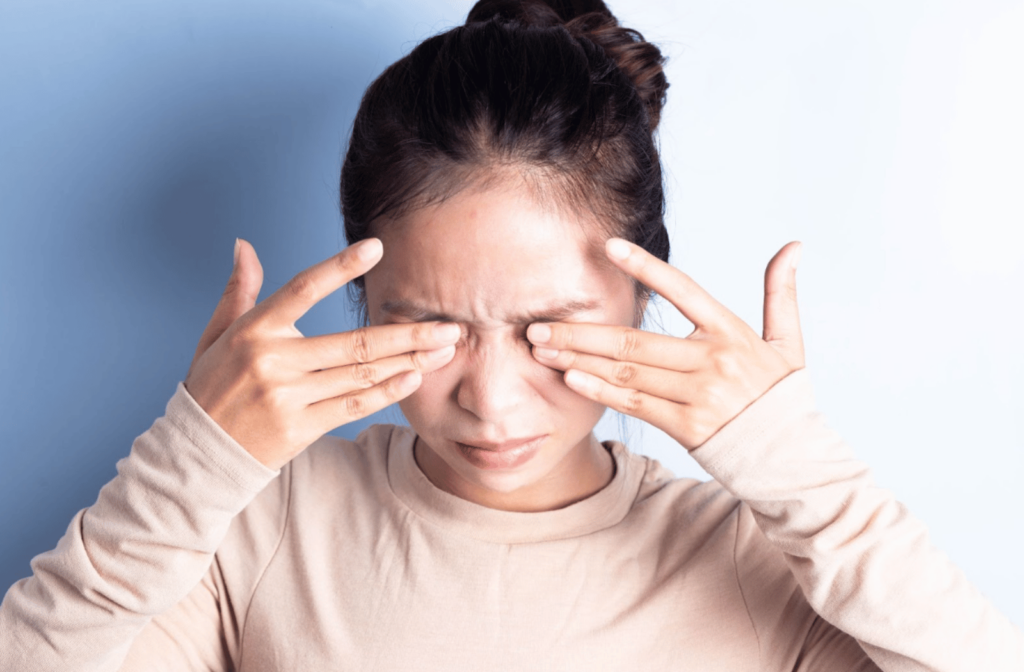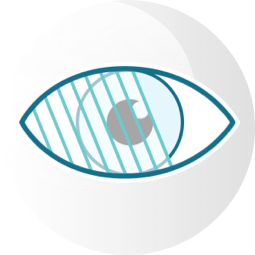Dry eye syndrome is frustrating. Those gritty, burning, and uncomfortable sensations can be significant, leading to more frustration than you need to deal with. Fortunately, this condition is a lot more common than most people think, so your optometrist can help you find relief from your dry eyes. But what is dry eye syndrome, exactly?
Dry eye syndrome is an eye condition caused by an imbalance of the tear film itself. This leaves the eye exposed and easily irritated, quickly causing inflammation, blurry vision, and more. If you suspect you have dry eyes, reach out to your optometrist to discuss dry eye therapy.
What Causes Dry Eye Syndrome?
Every time you blink your eyes, you disperse a tiny layer of tears across their surface. These tears act to protect your eyes from contaminants, dust, and more, all while keeping the eye hydrated.
To properly do their job, your tears need three core components:
- Mucus: created in goblet cells in and around the eye
- Water: created in the lacrimal glands
- Oils: created in the meibomian glands
When you have the right balance of these three layers, the eye remains protected. It’s capable of flushing away harmful particles while still providing a clear surface for light to refract through. However, the human eye is naturally sensitive, and sometimes outside factors can affect one or more of these layers.
This leaves the tear film unbalanced. Your eye may produce tears that cannot properly do their job, or it simply may not be able to make enough tears at all. When this happens, the eye is exposed and vulnerable to the outside air and potential problems. This is dry eye syndrome—and it is a lot more common than most people think.
Common Causes of Dry Eye Syndrome
Dry eye syndrome can be set off by many different factors. The meibomian glands are often a key player in this condition—these tiny glands, located throughout the eyelids, are easily susceptible to blockages and plugs. This restricts the flow of oils to the tear film, causing the tears to evaporate faster than usual. When this occurs, it’s called “evaporative dry eye.”
However, this isn’t the only cause. Other potential causes of dry eye syndrome include:
- Age-related changes in the eyes
- Thyroid disorders
- Certain medications, such as antihistamines and decongestants
- Medical conditions, including rheumatoid arthritis and diabetes
- A particularly dry, smokey, or windy environment
- Long-term contact wear
- Vitamin deficiencies or poor diet
Because dry eye can develop due to so many potential causes, a professional diagnosis is key. Your optometrist can thoroughly examine your tear film and help you find the right solution. It’s therefore essential to recognize the symptoms of dry eye syndrome.
Recognizing the Signs of Dry Eye Syndrome
Dry eye syndrome is often easily recognizable by the tell-tale burning, gritty sensations throughout the eyes. It often feels as though there’s a small piece of sand or dirt trapped under the eyelid, inflaming the eye.
Other symptoms include:
- Stinging, burning, scratchy sensations in the eyes
- Stringy mucus in or around the eyes
- Sensitivity to light
- Eye redness
- A sensation of having something in your eyes
- Difficulty wearing contact lenses
- Blurred vision or eye fatigue
If you experience any of these symptoms, it’s time to visit your optometrist to discuss treatment.
How to Treat Dry Eye Syndrome
A professional diagnosis should be your first step when it comes to dry eyes. Your optometrist will take the time to ask questions and examine your eyes to determine the right place to start.
Typically, a multi-pronged approach is helpful. Your optometrist may recommend:
- Eye drops for temporary relief. These act to stimulate and supplement your natural tear film to prevent early tear evaporation.
- Vitamin supplements, usually including omega-3 fatty acids and vitamin A. These are key components of a healthy tear film.
- Punctal plugs aim to prevent your tears from draining too quickly.
Sometimes, though, a more advanced approach is required. If your optometrist believes this to be the case, they may recommend intense pulsed light therapy (IPL).
What Is IPL for Dry Eye?
Intense pulsed light (IPL) for dry eye is an in-office treatment designed to help those suffering from dry eye syndrome—primarily when the condition is caused by an issue with the meibomian gland.
With IPL, gentle amounts of heat-based light are applied to the eyelids and surrounding area. This begins warming and stimulating the area, gently heating the glands inside the eyelids. Any oil blockages are slowly melted and broken down, restoring the natural flow of oils to the tear film.
IPL is a quick, non-invasive approach to treating dry eyes. It offers an easy, long-lasting approach to finding relief from dry eyes, and can be extremely effective!
Find Relief from Your Dry Eyes
If you notice any signs of dry eye syndrome or are experiencing any other irregularities, contact our team at McCauley Celin Eyecare Associates. Our experienced optometrists are here to help you find relief from your dry eye symptoms. Don’t suffer in silence; book an appointment with us today!














